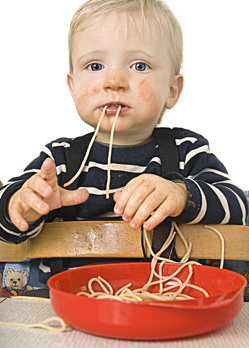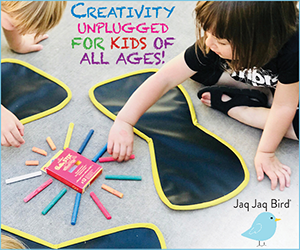Eight Tips for a Pleasant Mealtime with Toddlers

Mealtime is a common source of stress for parents as toddlers can be quite fussy—and messy—eaters, but mealtime is the perfect opportunity to teach young children two major personal and social skills: nutrition and table manners.
Mealtime, the latest board book in the Toddler Tools® series by Elizabeth Verdick, offers simple suggestions to engage little ones in a happy, healthy time at the table. Here are eight tips for parents and caregivers to set the stage to guide toddlers toward healthy eating and positive mealtime routines—and to make time shared around the table pleasant for all:
Know your goals. Mealtime is an opportunity to teach young children two major life skills: nutrition and table manners. Both skills take time and practice. The table is a busy place, and it’s not always possible to focus on both skill sets at once. It’s more important for your child to grow and be healthy—so put the greater emphasis on eating nutritious foods. Keep the message simple and repeat it often: “We eat our fruits and veggies to grow up strong and healthy.”
Set some rules. When your child is young, teach the “Always try one bite” rule. Encourage your child to take at least one bite of an unfamiliar or unwanted food, and then leave it at that. If your child doesn’t like the food, don’t force the issue. And don’t give up either—the very next time you get your child to try a bite of that same food, he might like it!
Have reasonable expectations. Long family dinners with great food and conversation can be wonderful—but not always achievable. Making meals simple, kid-friendly, and healthy is plenty. As your child grows, mealtime will become a bit more manageable. Accept that, for now, chaos comes with the territory.
Get your child involved in meal prep. Toddlers are naturally curious and full of energy. As you make a meal, let your child help with simple tasks—tearing lettuce for the salad or putting a spoon by each plate. Then make a big deal about how your child helped cook and set the table.
Practice praising your child. Did she taste a new food? Or remember to use a napkin? Or get through a whole meal without spilling her drink? Notice each small triumph and remember to say, “Good job.”
Create rituals and routines. Have children wash their hands before coming to the table. You can also use mealtime to teach simple manners like “Please,” “Thank you,” and “May I be excused?” Depending on what works for you, you might signal that mealtime is a special time by lighting a candle, saying grace, or briefly holding hands at the table. You might even encourage your child to “Kiss the cook.”
Give your child some undivided attention. One way to get toddlers to enjoy meals and sit still for an extended period of time is to give them your full attention. Ask them questions. Listen intently to their answers. When you make the table a nurturing place, your child will come to appreciate mealtime as a special time together.
Keep it short. Toddlers tend to eat and run—literally. At this age, they’re wiggly and active and may not be able to sit at the table for long. Instead of making your child stay until everyone has finished, let him get up and play so the rest of you can linger. Just make sure he clears his plate first.
Tips from Mealtime by Elizabeth Verdick, illustrated by Marieka Heinlen, copyright ©2011. Used with permission of Free Spirit Publishing Inc., Minneapolis, MN; 800-735-7323; www.freespirit.com.



